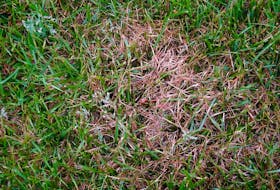Late last fall I got an email from a friend, John, looking for advice on building a new set of stairs going down into the basement of the house he’s renovating. John is pretty handy with tools, but designing the support structure for stairs was new to him. His question and my answers apply to any stair-building project you might run into, so I thought you’d like to listen in and learn. Stairs seem complicated, but the basics of creating the shape and angle of the staircase skeleton is simpler than it looks. Any handy homeowner can succeed.
John’s situation begins where every stair-building job does, by measuring the total distance from the walking surface of one floor to the walking surface of the floor below. In John’s case this was 105 inches. The first part of any stair-building job is to lay out parts that are called stringers. These are the notched side pieces of 2×12 lumber that actually support the treads you walk on. Early on, John asked:
“How can I figure out the vertical distance between stair treads and the width of those treads? I’ve cut a few stringers now they’re not turning out.”
John’s question is fundamental to the job of building any kind of stairs, and here’s how you determine the numbers:
Step 1 The word “rise” is a stair-building term that describes the vertical distance between the walking surface on one tread and the next tread up or down. “Run” refers to the horizontal width of each stair tread (not counting any overhang of the tread at the front). Each pair of rise and run figures (expressed in inches) for one stair should add up to between 17 or 18. This ancient fact ensures that the staircase feels comfortable under foot and is as safe as can be. So a stair with a nine-inch horizontal run should have a vertical rise of eight inches or so to work well. The wider the run figure, the shorter the rise should be to feel correct under foot.
Step 2 Determine how many and what height of whole stair treads fit into your overall vertical space. With a 105-inch overall rise in John’s case, I suggested he jump in and assume 12 treads and see what how the numbers work out. For layout purposes, the upper floor level is consider a tread because you step up onto it at the top.
So, imagining 12 treads for the time being, the calculation looks like this:
Overall rise of 105” ÷ 12 possible treads = 8 3/4” individual stair rise. Plug this figure into the formula that says rise and run figures for a given stair should equal 17 or 18, and you’ve got 8 1/4” or 9 1/4” for the stair tread width (aka “run”). Will this work comfortably underfoot? Yes, a staircase with this configuration would be fine, but it could probably be more comfortable if the entire staircase were at a shallower angle.
As long as John has enough additional horizontal space for the overall staircase (and he does), he could go with 13 treads instead of 12 to create a less steep staircase. In this case the math would look like this: 105” ÷ 13 = 8” rise, with a 9” or 10” run. This would make for a nice, comfortable stair and less steep, too.
Step 3 Mark the details of rise and run figures onto the 2×12 that will support the treads (horizontal pieces that you walk on). This is one of those building operations that’s made much simpler with a carpenter’s trick, in this case using a carpenter’s square. How does this work in real life? Check out my stair design and layout video at baileylineroad.com/37884 and see more of my answer to John.
Steve Maxwell has been writing articles to help Canadians get the most from their homes since 1988. Visit him online at BaileyLineRoad.com and join 30,000 people who get his Saturday morning newsletter each week.
Copyright Postmedia Network Inc., 2020








